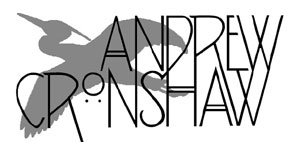
- Andrew Cronshaw website -
- Andrew Cronshaw MySpace -
- Cloud Valley Music website -
- Andrew Cronshaw website -
- Andrew Cronshaw MySpace -
- Back to Reviews Introduction page -
Written in
fRoots
issue 257, 2004
VARIOUS ARTISTS
The Alan Lomax Collection – The Spanish Recordings – Basque Country: Biscay and
Guipuzcoa
Rounder CD82161-1772-2 (2004)
VARIOUS ARTISTS
The Alan Lomax Collection – The Spanish Recordings – Basque Country: Navarre
Rounder CD82161-1773-2 (2004)
IBON KOTERON
Airea
Elkar KD 646 (2004)
In August and December 1952 and January 1953 Alan Lomax and his assistant
Jeannette Bell recorded music in three of the four Basque provinces that are
within the Spanish border. With no prior knowledge of Basque, nor indeed
Iberian, traditional music, what they encountered was the result of advice and
help by local contacts and general musical nose-following. It’s by no means a
complete survey; no txalaparta, for example, and the recordings of toberak,
txalaparta’s metal equivalent, were lost. But, as recompiled here with some
material not on the original LPs, these tracks, a total of seventy-one on the
two CDs, are rich with the shapes, texture and variety of Basque music.
On both discs there’s a lot of singing, full of
character – solo voices including verse-improvising bertsolaris, duets, loose
assemblages, folk chorales, ululating irrintzis, the cry of a blind
lottery-ticket seller - as well as the high reed sound of alboka, the strident
shawm tones of dulzainas, the three-holed whistles txistu and silbote,
skittering tambourine and rattling snare-drum.
If your image of archive field recordings is as a
worthy, scratchy listen – well, these aren’t like that. Lomax was a good
recordist, and with the CDs’ remastering these sound like they were recorded
yesterday, and the material on them is full of life. And the booklet notes,
new-written for these releases largely by the Basque musician and teacher Juan
Mari Beltran (whose 2002 CD Arditurri is a key work of present-day Basque
traditional music), are as excellent as one would expect from him, not just
dealing with the recordings but giving an authoritative overview of traditional
music and instruments. With Aintzane Camara, Beltran also tracked down and
interviewed many of the original performers.
Despite the pressures of Franco’s fascist
dictatorship in the middle of the 20th century, much of the music and traditions
recorded here live on, still a part of celebratory life in Euskal Herria. But
even though the dulzaina and drums and the rest still animate the streets during
celebrations, music worldwide has become a thing that pumps competitively out of
loudspeakers, and so attention is turned to ways of making music that can elbow
its place on the CD-player at home and abroad, and many of today’s Basque
musicians are involved in that process..
The alboka is an iconic instrument in Basque
music. Running across a curved, decorated handle, a cow-horn at one end of the
instrument acting as a reed-chamber and a second at the other end as its
acoustic bell, are two parallel tubes, each with a single reed. One has five
holes, the other three, so by fingering across the two, the player, who uses
circular breathing, can play harmonies, as if it were a double-chantered
bagpipe. Ibon Koteron is alboka’s leading present-day player. On Airea
he’s joined, in music mostly co-written with producer Kepa Junkera, by other
reed and reedy-sounding instruments including Armenian duduk, Finnish reed
horns, Sardinian launéddas, trikitixa and Gilles Chabenat’s hurdy-gurdy, with
txalaparta cast in the role of thudding, wood-pattering rhythm section, and
vocals from Galician pandeiretera group Faltriqueira and Corsican female vocal
trio Soledona.
The melodies draw partly on Basque forms
including the 5/4 zortziko rhythm, and the dominant sounds are of alboka and
txalaparta, so what emerges can’t fail to have some Basque character while
making links with other traditions, and it’s good to have the alboka championed,
but the album is short on strong, distinctive tunes; most have the feel of being
built up from a rhythm track. And unexpectedly, given such notable players and
potentially wild instrumental resources, despite the preponderance of up-tempo
the whole thing has a measured, careful pace with a curious, suppressing lack of
fire and energy. It’s a significant project, nevertheless.
© 2004
Andrew Cronshaw
You're welcome to quote from reviews on this site, but please credit the writer
and fRoots.
Links:
fRoots - The feature and
review-packed UK-based monthly world roots music magazine in which these reviews
were published, and by whose permission they're reproduced here.
It's not practical to give, and keep up to date,
current contact details and sales sources for all the artists and labels in
these reviews, but try Googling for them, and where possible buy direct from the
artists.
CDRoots.com in the USA, run by
Cliff Furnald, is a reliable and independent online retail source, with reviews,
of many of the CDs in these reviews; it's connected to his excellent online magazine
Rootsworld.com
For more reviews click on the regions below
NORDIC
BALTIC
IBERIA (& islands)
CENTRAL & EASTERN EUROPE, & CAUCASUS
OTHER EUROPEAN AMERICAS OTHER, AND WORLD IN GENERAL
- Back to Reviews Introduction page -